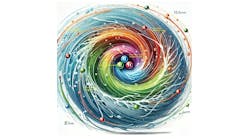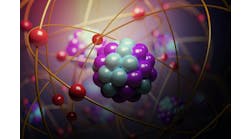Greg: Automation engineering is an especially challenging profession because you need to get thousands of details right for a project to be successful, whether we are talking about an instrument upgrade and migration in an existing plant or a greenfield new plant.
Stan: The books and courses in academia address some of the control issues, but often on a more theoretical level oriented more on getting the next journal paper published and the next research grant. Partnering with industry helps make the results more focused and practical, but little is offered as to getting the right measurements, installation, control valves, control strategy, filtering and all the PID details (e.g., PID form, structure, tuning and execution rate).
Greg: You can read thousands of pages in books and handbooks written by practitioners, but the info is buried at best. In many cases, what you need to know is not exactly anywhere. I have tried to convey practical information in my books, but have to admit the results are overwhelming to the average engineer. Who has time to read and, even more importantly, categorize and organize the knowledge specifically needed? Hunter Vegas and I have tried to address this in our ISA book 101 Tips for a Successful Automation Career, but much more needs to be done.
Stan: Since we are all pressed for time and eliminating bad mistakes is the highest priority, we are offering here from our collective 100 years of experience what can get you into the most trouble. Dial thermometers, pressure gauges and field switches shown in some publications, like field engineers with ties, no safety glasses and no hardhat, may make a pretty picture but do not belong in a plant. We don’t think we have to say such stuff is dumb and even unsafe. If a temperature or pressure is important enough to measure or to trigger an alarm, it must be done via smart transmitters so the signal is reliable, seen by the operator and historized. Please insist that packaged equipment suppliers adhere to this requirement and to plant standards on selection and installation of instruments. Tell your vendors that pushing this stuff and wearing suits and ties make a bad instead of a good impression.
There can also be “deal breakers” even when using smart instrumentation.
Greg: Here are my deal breakers for temperature:
- A thermocouple instead of an RTD when a repeatability better than 0.5 °C and a drift less than 0.1 °C per year is needed
- Fit of sensor within thermowell has an air gap around sheath or from sensor tip to inside of thermowell wall or tip greater than 0.02 in.
- A liquid or gas velocity less than 0.05 and 2 ft./sec. past the sensor, respectively
- An insertion length that does not fully extend through the nozzle and is less than 6 in. past the wall or not within 25% of a pipe centerline
- Using a DCS or PLC thermocouple or RTD input card instead of a dedicated smart transmitter with narrowed span and sensor matching
Stan: I would say most orifice meters are deal breakers for flow, but, acknowledging there are some very large lines with minimal performance requirements, here is my list:
- Using an orifice meter when an accuracy better than 2% of flow or rangeability greater than 8:1 is needed (note that normal rangeability limit is 4:1 and can only be stretched with a narrow-span transmitter and an exceptionally uniform flow profile and low noise).
- Using a vortex meter when accuracy better than 0.5% of flow or rangeability greater than 15:1 is needed (note that 15:1 is only obtainable if the meter capacity matches the maximum flow requirement and there is an exceptionally uniform flow profile)
- Using a magmeter when accuracy better than 0.25% of flow or rangeability greater than 50:1 is needed (note that 50:1 is only attainable if meter capacity matches maximum flow requirement and fluid conductivity poses no limitation)
- Using anything but a Coriolis meter when accuracy of 0.1% of flow or rangeability greater than 50:1 is needed
- Measuring with a meter body that is not completely filled with the fluid to be measured
Multiple inline meters of successively smaller sizes can be used, but the additional pressure drop, installed cost, maintenance and complexity point toward using a single flowmeter with the inherent rangeability that meets the application requirement.
Greg: The most common cascade control loop is a flow loop. Often ignored is the loss of rangeability at low flows causing noisy and erratic flow signals. When the flow is below the rangeability limit, the control loop should use a flow computed from the valve position, assuming the valve has minimal backlash and stiction near the closed position and good positioner sensitivity.
[sidebar id =1]This brings me to my deal breakers for control valves. For more on bad deals for valves see my May 2016 Control article, How to specify valves and positioners that don’t compromise control.
- Any valve originally designed for isolation (tight shutoff)
- Any positioner with a poor sensitivity that causes the 86% response time of a valve to increase by more than 20% for the smallest changes made in PID output (ruling out spool-type positioners and many cheap positioners)
- Any positioner tuned with integral action
- Any valve with a resolution or deadband multiplied by the process gain resulting in a change in PV larger than allowable error
- Any valve with an 86% response time multiplied by maximum rate of change of the signal resulting in a change in PV larger than allowable error
Stan: Ideally, sensors and transmitters should be chosen that minimize the length or eliminate sensing lines without going to diaphragm seals. Given that this is not always possible, here are some deal breakers:
- Differential Pressure Transmitter (DP) with unknown fluid in sensing lines
- DP for flow or pressure measurement with no equalization manifold
- DP for level measurement with no equalization line on vessel not open to atmosphere
- DP lines without continous slope or no fill, vent and drain connections
- DP in gas service mounted below process connections
Greg: There are so many deal breakers for pH, I could write a book (wait, I did write one). Here the ones that first come to mind:
- An electrode that sits dry for more than 20 minutes a day
- A fluid velocity less than 0.5 and 5 ft./sec. for clean and fouling service, respectively
- An electrode subjected to pH less than 1 or greater than 12 for more than 100 minutes a day
- An electrode in a pump suction line
- An electrode tip that is not pointed down or is not within 25% of pipe centerline
Greg: I would like to say that not using three electrodes with middle signal selection is a deal breaker, but this would be too radical, even though in almost every case, the increase in reliability and precision, reduction in noise and decrease in maintenance make the return on investment ridiculously fast. Especially strange is seeing owners of million-dollars-per-day production units that depend on pH for product quality go with two electrodes, raising more questions than answers, and not see their way clear to a third electrode.
The top 10 reasons to not ue pH middle signal selection
- (10) You carry pictures of your favorite electrode in your wallet
- (9) You like to play guessing games as what the actual pH is
- (8) You like to hang out in labs
- (7) If electrodes require so much maintenance, how can three times as many be good?
- (6) The operator needs something to do, like guessing at needed pH adjustments
- (5) Spikes in the pH make tuning more interesting
- (4) Noise in the pH leads to research paper on filter algorithm
- (3) One electrode leads to positive thinking (“Reality Reeks”)
- (2) You want the top of the line, not the middle
- (1) The pH in the buffer solution was so steady I dare you to try and change the pH
[sidebar id =2]




